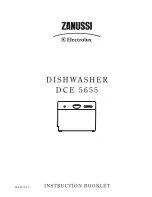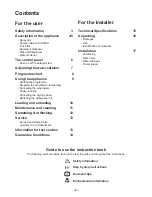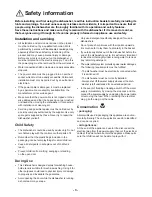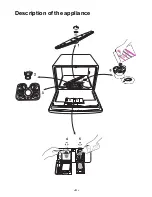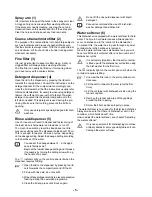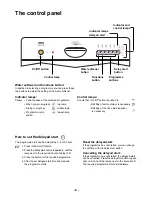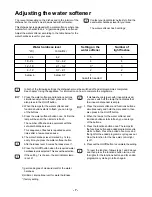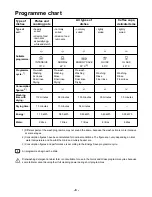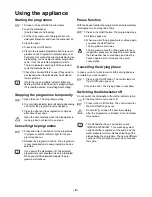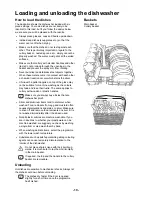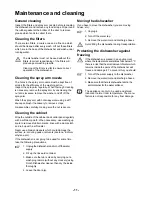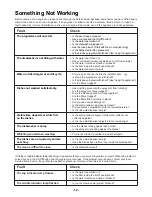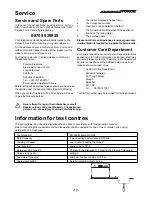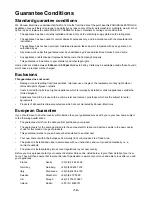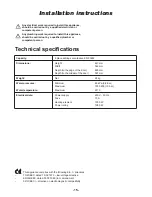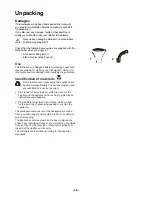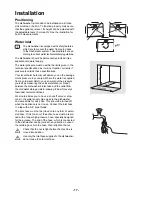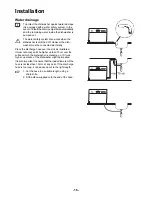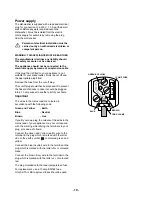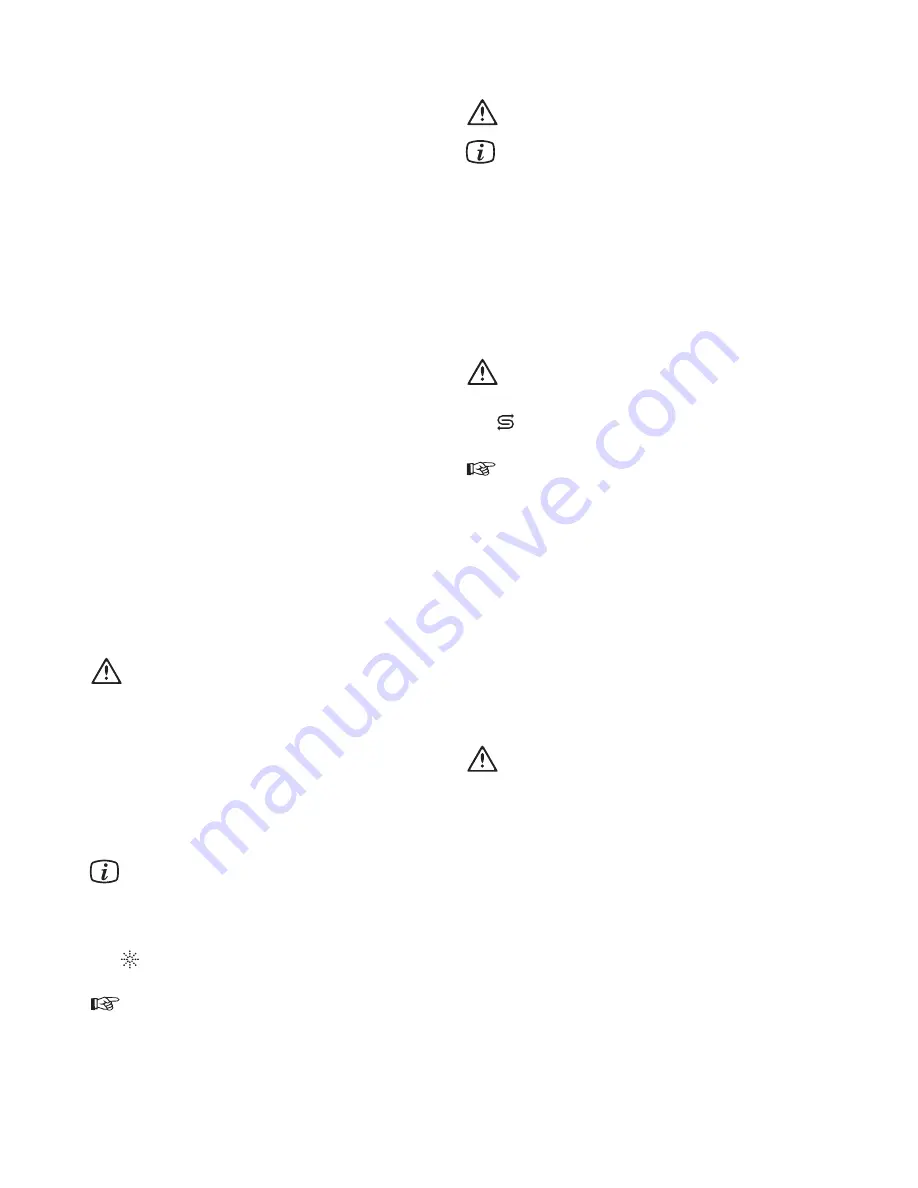
- 5 -
Spray arm (1)
It is important to keep all the holes in the spray arm clear.
A clogged hole can seriously affect washing efficiency.
If the spray arm needs cleaning, unscrew the nut anti-
clockwise, remove the washer and lift off the spray arm.
Clear the holes and shake out any food remnants.
Coarse strainer/microfilter (2)
The purpose of the coarse strainer is to catch large objects
such as toothpicks and pieces of eggshell. Make sure
that the strainer is always clean. Turn the coarse strainer
anti-clockwise. Lift it out and rinse it under running water
whenever necessary.
Fine filter (3)
It is just as important to keep this filter clean. A dirty or
clogged filter will always impair washing efficiency.
The fine filter can easily be lifted out for cleaning when
you have removed the coarse strainer.
Detergent dispenser (4)
Open the lid to the dispenser by pressing the lid catch
towards the compartment. Consult the instructions on the
detergent packet, fill the compartment accordingly and
close the lid. Remember that the instructions usually refer
to full-size dishwashers, for example when using detergent
tablets, it is sufficient to use just half a tablet. Pre-wash
detergent is poured into the smaller compartment to the
left when needed. This detergent is used during the pre-
rinsing. Make sure that nothing prevents the lid from
opening.
Only use detergents specially designed for dish-
washers.
Rinse aid dispenser (5)
Use of rinse aid will result in cleaner and faster drying of
the load, since it helps water and residues to run off.
Too much rinse aid may result in streakiness, too little
may cause white spots. The dispenser holds about 150 ml.
This is enough for approx. 60 wash cycles, depending
on the dosage setting. Adjust the dosage setting according
to the hardness of the water.
You can set the dosage between 1 - 6, the appli-
ance is factory set to 1.
Begin at the lowest dosage setting and increase
if necessary by turning the setting arrow with e.g.
the handle of a spoon.
The indicator light on the control panel is lit when the
dispenser requires refilling.
1. Open the lid to the dispenser by pressing the lid
catch towards the compartment and lift the lid.
2. Fill up with rinse aid; do not overfill.
3. Wipe off any spillage carefully to prevent excessive
foaming during the next wash programme.
4. Close the lid and press until it locks again.
Do not fill the rinse aid dispenser with liquid
detergent.
Zanussi recommends the use of Finish dish-
washer detergent and Rinse Aid.
Water softener (6)
This dishwasher is equipped with a water softener for hard
water. The lime in hard water causes white deposits to
occur on dishes and to the interior of the dishwasher.
To prevent this, the water has to pass through a special
container where the hardness is removed.
Since the water softener uses dishwasher salt, you will
have to refill the salt container after a certain number of
dishwasher cycles.
It is extremely important, that the salt container
is filled up with the dishwasher salt before using
the dishwasher for the first time.
The indicator light on the control panel is lit when the
container requires refilling.
1. Unscrew the filler cap to the salt container anti-
clockwise.
2. Fill the salt container with water (only the first
time).
3. Fill the container with dishwasher salt, using the
funnel supplied.
4. Remove the funnel and wipe off any spillage
around the filler opening.
5. Screw the filler cap back properly in place.
The water softener is now ready for the first load of dishes.
Always make sure that there is dishwasher salt in the
container, which holds about 1 litre.
How to adjust the water softener, see chapter ”Adjusting
the water softener”.
Only use special salt for dishwashing machines,
ordinary domestic salt, especially table salt, can
damage the water softener.
Summary of Contents for DCE5655
Page 1: ...822 61 10 23 ...
Page 4: ...Description of the appliance 4 4 5 ...
Page 20: ... Electrolux plc 2003 ...

